Hi, my name is Jonathan, and this is my personal story. Since the past few years, I have been practicing a Barefoot lifestyle. After running and hiking barefoot for a while, I’ve come to a realization that it is indeed the real thing, and I’d love to share my experience with you all!
I will share with you all the events that lead me to start the practice of barefoot running, and that also cured most of my orthopedic pain. In this ‘Long Story,’ I will elaborate and describe in detail the chronicle injuries and pains I experienced and accumulated over the past 20 years of wrong approach to my treatment. With a barefoot lifestyle, however, I was able to get rid of most pain and get back to living not just a healthy life, but quality life as well. I hope that if someone out there is in a similar painful situation, they can find solace and comfort in the fact there is a much better way to heal yourself.
It was not a magical and fast solution like most of us are looking for this age of modern medicine, it is not necessarily the solution for your problem, if it is, it will take a lot of efforts, time and sweat. But it’s worth it!
A tiny spoiler, I owe it all the friend how handed over to me this book, “Born to Run: A Hidden Tribe, Superathletes, and the Greatest Race the World Has Never Seen“.
The Beginning: Flatfoot discovery at Age 10
“Flatfoot is a postural deformity in which the arches of the foot collapse, with the entire sole of the foot coming into complete or near-complete contact with the ground” sourced from Wikipedia.
Anyone who engages in sports on a regular basis will know how it all starts; the age at when you start doing it intensively. For me, that age was 10. I had joined the school’s handball team, but I was one of the worst players and was so useless that you were better off passing the ball to the opposition than me. But I was passionate, and I just couldn’t wait for practice sessions twice a week after school. Saturday’s were game days, and I used to pretend to be sick every time the coach used to ask us to warm up. Nevertheless, I loved it! 15 minutes into the game, and I would give my all to it. A few years, lots of practice, and some biological changes later saw me turn into a pretty decent handball player.
Life isn’t fair, though, and everything isn’t rainbows and sunshine all the time. A few months after my first practice I started to feel pain in my fits, especially in my heel and arch areas. This was mainly when I was barefoot running so I had to eventually stop going to my handball practice sessions. It not only made me sad, but I was also afraid of barefoot running now.
So my mum and dad took me to an orthopedic who suggested that I get X-Rayed after looking at my fits. The orthopedic looked at my X-Rays and figured immediately that I had Flatfoot pain and recommended that I get some good orthopedic insoles if I wanted to walk properly. From that day till 20 years later, I bought new insoles every year. I had to get the insoles checked every six months and had to follow the store expert’s recommendations. He used to suggest that I wear the most advanced insole (and most expensive, of course) because my fits could only be sustained by the best gear in order to keep me running, or I’ll surely damage my already defective bone structure.
Now it should be noted that the insole and expert’s suggestions did seem to help me back then, but most amazingly, whatever the problem was, it wasn’t Flatfoot! It never was. My fits were a bit flat and wider than normal, but I never had any kind of flatfoot whatsoever.
After reflecting back on those times, I realize that the pain could have been due to several reasons, ranging from a temporary injury to a woeful running technique or goodness knows what. Ironically, I think it was due to some bad running technique. And all that time, those insoles had cost me anywhere between $100 to $300 depending on the type and material used in them. And when I was really desperate, I had tried every type of expensive and unnecessary gear that cost me thousands of dollars in addition to the orthopedic suggested insoles for a problem I never had!
Don’t get me wrong, though. People do have serious orthopedic issues and do indeed need specially made insoles, but those cases are extreme. You can solve most other problems through training your fit muscles properly and improving your movement techniques. Hence, if your child has been diagnosed with Flatfoot pain, I urge you to get a second opinion on the matter and look for natural (and better) solutions to the problem. Posture Direct for example, has some great exercise programs to treat flatfoot.
Insoles should be used as a last resort because the use of these orthopedic gear usually limits the movement of your body and changes the way it is naturally supposed to work. It can be especially bad for children whose bodies are still developing and can lead to chronicle problems due to changes in the skeletal structure and degeneration of core muscles. I’m sure you want to know why, and I’ll tell you. Insoles treat flatfoots in a way that they unnaturally lift the arch with a bulge placed exactly underneath the arch. If the arch cannot hold the weight of the body, the insoles support it. However, this leads to your legs being used less and gradually degenerates the muscles in your arch causing posture issues, and ironically, perpetuates the issue!

As illustrated by the pictures above, people with flatfoot have a very low arch. With extensive muscle work, though, the arch angle can be improved!

This is an example of an insole made to support a flatfoot. Many times Orthopaedic doctor will subscribe such an instrument. Although there are other options available to treat the issue before settling with the uncomfortable situation.
Coming back to my story, I could not relate any pain nor injury to flatfoot for the next 10 years, what made me number 1 PR agent for insoles. I advised everyone to use the most expensive and advanced insoles in order to protect themselves from future back and knee problems. I criticized everyone who used cheap sneakers and insoles that had no proper support.
Let’s go back a bit to when I was 13 years old and was still playing handball, and had also been accepted to the national team. We never won any international trophies, but we gave all we had in us and enjoyed it while it lasted. I suffered many sport accidents and injuries like twisting my ankles while running, breaking my clavicular bone in Judo practice, and fracturing my nose in handball practice, etc. All of this is acceptable, though, when you play extreme sports with so much passion and I’ve come to embrace it. Well, almost all of it. I never got around to coming to terms with twisting my ankles, but I’ll leave its details for another article.
Pain is back and starting to escalate
At age 18, I got drafted in the army and started training in the infantry as a combat radio operator. This turned out to be a bigger deal than I thought. Military training was far more extreme than the sports I used to play; walking and running miles at a stretch with 20 to 40 KGs of weight on your back, extremely limited amount of sleep, limited rest, and little food and water. Training went on for seven months and took another 5 in the commander’s school. Almost 1 year, give or take a few weeks, of extreme physical training in short. It completely changes your posture and the way your body moves!

One year after the service, the beginnings of a new pain in my ankles were sprouting. I could hear a clicking noise in my ankles during jogging and after some time, I began registering pain as well. While I was in service, the pain was tolerable, but the pain had alleviated to a level that I had to stop jogging a while later. It had felt like my bones would crack any moment if I made an effort to move ahead. I approached a few doctors and experts, and all of them recommended that I stop engaging in any type of sport activity that involves running. One professor even suggested that my tendons are too tight and rough each other up while I’m running and that the only solution was for me to get a surgery. Or, I could only play sports that involved no running.
With frustration creeping in me, I stopped running. I did get involved in swimming and wave surfing etc., but I missed running so badly!
Upper back pain
Another year into military training and I had developed back, upper back, and spinal pain. It all initiated after I had to carry almost 40 KGs on my back for a distance of 15 km. Carrying that unbearable weight and the journey can be really funny, though, and you occasionally find yourself in position we called the ‘flipped turtle position.’ When the platoon stopped for tactical or shelter rest, and you flipped and lied down on your back, it was almost impossible to lift yourself up for without help, hence, looking like a helpless flipped turtle.
Any way, the pain started after that, and it was mostly tolerable at first. I did get a few trigger points treatment at a physiotherapist which seemed to have solved the problem for a while till it all came back. But I can’t stress enough on how painful these trigger points treatments are! The physiotherapist used to stick his thumb right into the muscles that used to hurt. Can you imagine the pain now? Even when I was done with the treatment, I could feel the thumb sticking right into the pain zone…
Neurological pain: Metatarsalgia?
Metatarsalgia, literally metatarsal pain and colloquially known as a stone bruise, is a general term used to refer to any painful foot condition affecting the metatarsal region of the foot. This is a common problem that can affect the joints and bones of the metatarsals. sourced from Wikipedia.

Fast forward to the end of my service and during a rank ceremony I felt like my feet were being electrocuted. I could feel the sensation when I put a little pressure on my right foot’s toe. And mind you, this excruciating pain came without a warning. With no choice left but to go to my insole specialist, he suggested that I get the most advanced (for that time) and of course, unnecessarily expensive insole. Those insoles were called “Bio Mechanic Insoles,” and cost an exorbitant $350.
And surely, like every insole that I had tried till then, it felt great initially. I felt like it had solved my problem for sure this time, just to come back after a while with the same pain. Time period between visits at the store went shorter and shorter, until stopped helping at all. I did go to doctors for consultation regularly and they all had the same observation: my metatarsal bones bulge out more than they should, and so when I walk or run, it puts a lot of pressure on my metatarsal bones causing constant nerve irritation. And they also suggested that I might have damaged my tissues that protect the nerves and bones and it will probably never heal. Apparently, this happens to large portion of people who are involved in running.

This was in addition to the bulge that was already lifting my arch thanks to the flatfoot. It wasn’t comfortable, and I constantly had muscle spasms in my foot. It had felt OK at first, but after some time, I had to visit the insole store more often to help adapt to the shape of the insole. Worst of all, the pain wasn’t limited to my metatarsals now and had spread to the rest of my fit area as well.
So I looked for other traditional solutions. Orthopedic shoes, Soft shoes, sport shoes, self-shape-fitting shoes from Birkenstock, Saucony, Nike, Reebok, Teva, Rockport, and New Balance, etc. You name it, and I had tried it. Every company that glorifies the technology that comes with their shoes along with the curse of sky rocketing price. And every shoe had a different fitting, leading to a different pressure of weight on parts of my fits, and so I had to change shoes almost every day. This way, I never had pain in the same place, but in different parts of my fit every time I changed shoes, hence, making it a little more tolerable.
Surprisingly, I was noticing that walking barefoot or running at the beach was the least painful option. I still hadn’t connected the dots, but I was getting there!
Lower back pain: Are chairs the new epidemic?
I started my university and 4 years of Engineering studies. That also meant 4 years of sitting on my ass constantly. At 24 years of age and after my first year at the University, I started to feel lower back pain. It was clear that it was a result of sitting continuously for hours at end and studying, and it was making it difficult for me to even sit and watch a full length movie. My friends had known back then to stay clear of the most comfortable chair in the room when I was experiencing back pain, and secretly, I enjoyed getting the most comfortable spot in the room as well (:
I started going for regular osteopathic treatments and started doing yoga as well. It helped a lot, like every time I did something new. While you all know that exercise is highly recommended, you’d also know after reading my story that it isn’t something that work so easily for me.
Looking For Different Solutions
Now everything you’ve read so far about my pain syndromes were acquired in my twenties. It was like a tennis match, when one pain faded away, another kicked in. And it was never clear where the pain initiated from, and nothing the experts said would make any sense or helped connect the dots.
Including me, we were all missing the bigger picture. You’ve tolerated my story so far, so bear with me a little further. I’m about to get there.
In my early thirties, I was attending a family dinner, and I remember clearly when every pain I’d experienced so far attacked me simultaneously: my fits were shooting electrical arrows through my body, my lower back was screaming in pain, and my upper back side was paining so bad my eyes started to water and I could feel it all the way up to the right side of my face. In short, I was a mess!
I went to the orthopedist immediately for the Metatarsalgia pain was bothering me the most, and what he suggested completely threw me off. He suggested that I stop using the insoles for a few weeks and see if that helps! I couldn’t help but think that he had gone crazy. I took the advice, though, and it surprisingly helped a little. I was still under the impression that I knew better and kept trying out soft shoes and other tricks in order to soften the pain, but again, as usual, like every time, there was temporary comfort.
Shortly after this episode, I had to take a transatlantic episode to Africa for work, and a friend lend me a book on to read in the flight.
The Book That Changed My Life
Born to Run: A Hidden Tribe, Superathletes, and the Greatest Race the World Has Never Seen, written by Christopher McDougall .If you consider yourself a barefooter, then you probably already know about it. The book is basically about the journey of Christopher who back then was a reporter in New York Times, and was written tracking down the members of the reclusive Tarahumara Native Mexican tribe in the Mexican Copper Canyons. What the book describes the tribespeople as is natural distance runners with the ability to run over 100s of miles.
Christopher’s journey illustrated that the tribe was not used to any modern methods and used minimal foot protection made out of old car tyres. And surprisingly, the rate of injury among their people was extremely low, if any at all! It should be noted that Barefoot running and minimalism was always their before Christopher’s book got published in 2009, but his book helped the concept gain a lot of popularity and it started a revolution in the world. It literally changed the way people thought, helped by some great insight, statistics, and references to scientific articles that shed light on the advantages of running barefoot.
I gave it thought and slowly and gradually I decided I should give it a try. I was so desperate I was ready to look like a crazy homeless guy running barefoot in the dirty streets of the city. Mind you that this practice goes against the advice of every doctor, orthopedist, and specialists I had been to, so it wasn’t an easy decision.
It wasn’t a short transfer, and was long and painful as well, but when it came to it, the results were something I never could have expected.

The Result
I started off with walks in the park and took it up a notch by running short distances. Slowly but noticeably, pain was fading away. It was a long process though, and it took me months to get used to running barefoot and started to extend my runs and walks. I listened to my body every time I felt pain and gauged whether it would lead to further injury or healing, and rested or continued accordingly.
It wasn’t easy, though. After a couple of decades of using insoles and expensive shoes, going barefoot running wasn’t easy, I think my calf muscles were cramped for a year! But it was helping, and a few months into it my calf muscles were hurting me less and eventually it stopped. I even started wearing minimal shoes to work and some months later, there was almost no pain.
I started barefoot running again. I stopped asking my friends to leave the most comfortable chair for me and I was myself again. It was a great feeling and I was loving every moment of it!
Don’t forget that the journey was long, but I eventually got there. I do still have some feeling of pain, but I guess it’s due to the damage that twenty years of misusing my legs should have caused. What’s more important part is that it is completely manageable. I can comfortably claim that I am 95% cured! The other 5%? I’m hardly bothered by it!
And now, I have a new hobby: Barefoot Running (:
Even if this does not speak to you, or not relevant you your condition, I do have some advice. Don’t take for granted your doctors advice, keep looking for a better alternative and don’t give up!
Disclaimer: I’m not a doctor nor am I a foot specialist. All that write came from personal experience only
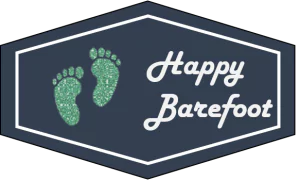
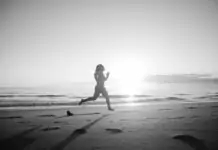
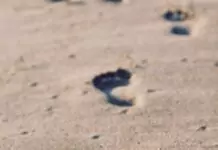
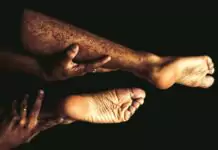

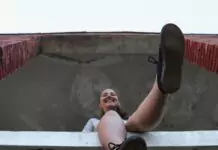

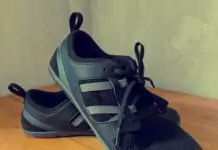
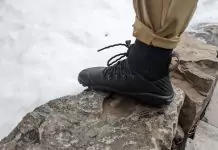
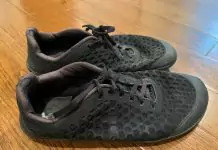

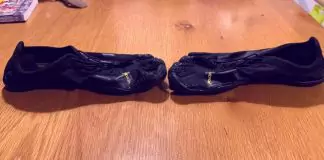


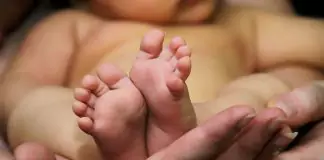






[…] And even when diagnosed, needs to think well before stepping into such feet’ boxes, as this story can show different. Though arch in a child’s feet does not develop until puberty, yet there […]